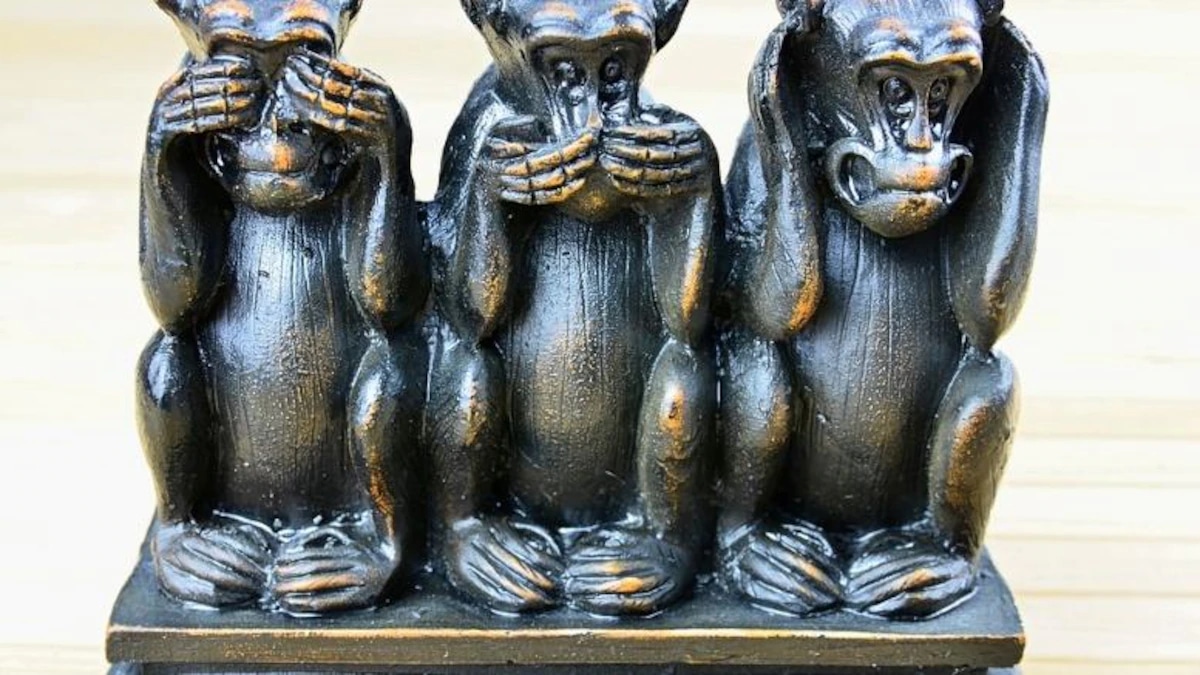Not everything that buzzes around on social networks is new. WhatsApp monkeys are no exception. They are already ancient and just come in a slightly different guise. We explain what it’s all about.
Where do the WhatsApp monkeys come from?
The template for the WhatsApp monkeys comes from Japan. They are the famous three monkeysSanbiki no Saru, whose origin can be traced back several centuries. The underlying meaning is even older and probably stems from Buddhist beliefs. According to this, the three monkeys demonstrate the exemplary way of dealing with evil, which one should keep away from oneself.
- In Japan, the three monkeys also have a positive connotation. They symbolise the quality of being able to look past something negative.
- The monkey Mizaru stands for hearing no evil, Kikazaru for saying no evil and Iwazaru symbolises seeing no evil. Freely according to the motto: Live and let live.
- In the western world, the positive thought has been transformed into the negative. In our country, the three little monkeys usually stand for a lack of civil courage and cowardice. In the sense that one notices bad things but ignores them so as not to have to intervene oneself.
- For the sake of order, the fourth monkey – which is hardly known today – should not be omitted: The monkey Shizaru, stands for do no evil.
The Monkey Emoticons on WhatsApp
Like almost all emoticons, the three monkeys Mizaru, Iwazaru and Kikazaru have multiple meanings on WhatsApp. For example, the monkeys are used as a symbol for absence. But the three WhatsApp monkeys also have individual meanings.
- Mizaru, the monkey that covers its eyes, is usually used as a WhatsApp symbol for “I am ashamed”.
- Iwazaru, the little monkey that covers its mouth, is often used as a symbol for secrecy.
- Kikazaru, the little monkey that covers its ears, is often used when you don’t want to know something.
- Shizaru, the fourth monkey, covers the abdomen with his hands. What you want to use this symbol for is up to your imagination.
